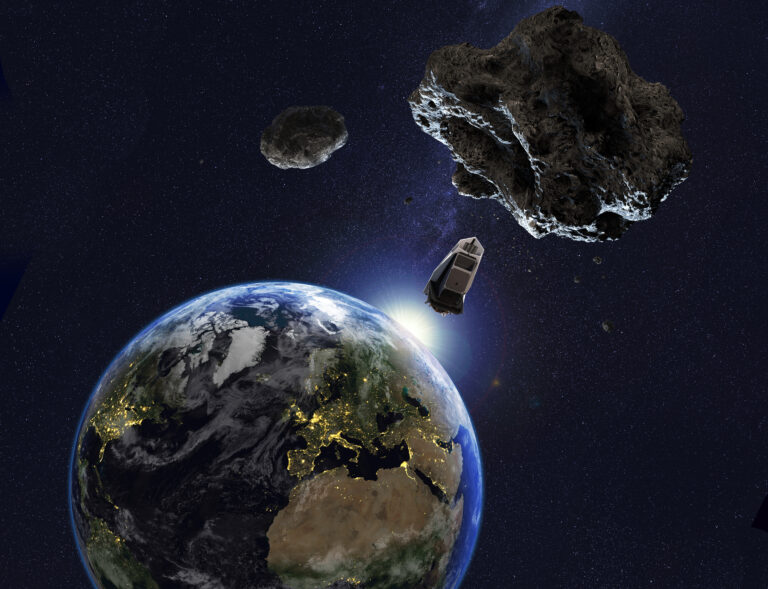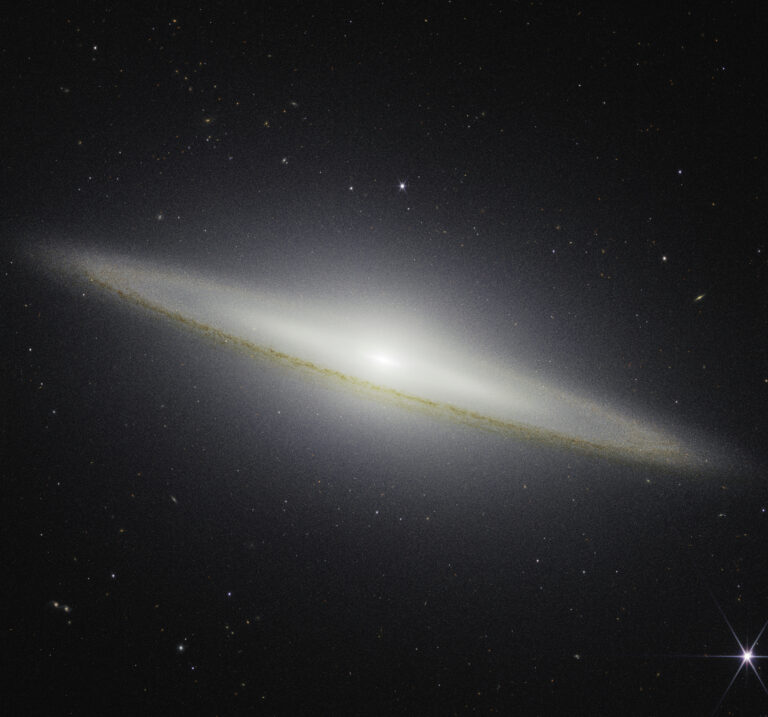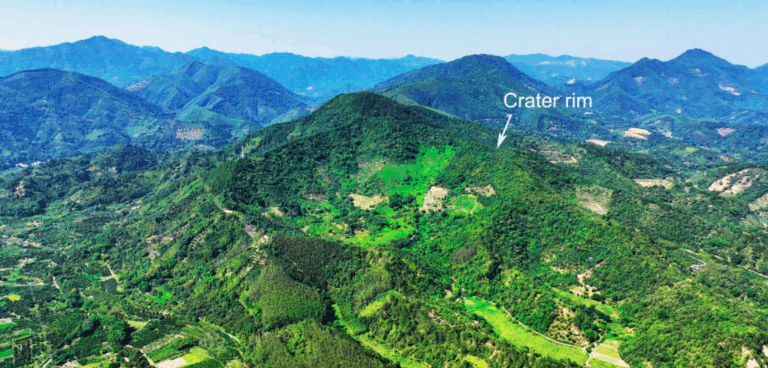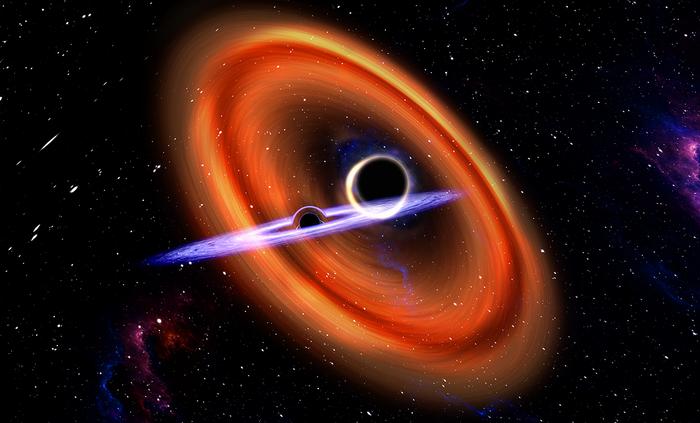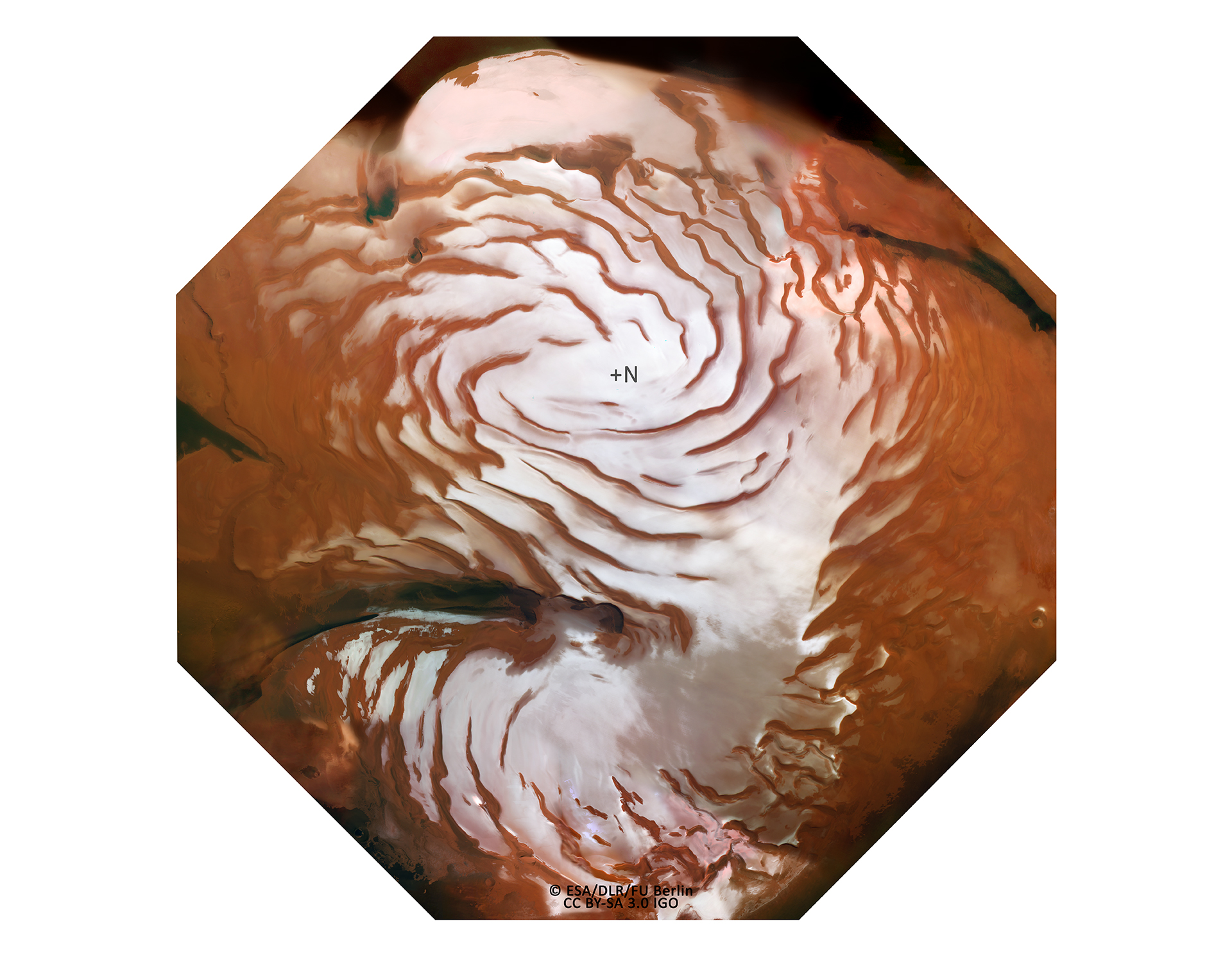
Credit: ESA/DLR/FU Berlin
Key Takeaways:
- A recent study proposes that future Mars missions should prioritize searching for microbial life or its preserved remains within the planet's ice, rather than in its rocks, clay, or soil.
- Researchers simulated Martian permafrost and ice cap conditions in a laboratory, exposing *Escherichia coli* samples in pure water ice and water-sediment mixtures to cosmic radiation equivalent to 50 million years on Mars.
- The experiment demonstrated that over 10 percent of amino acids from *E. coli* remained intact in pure water ice after 50 million years of simulated radiation, significantly outperforming samples with Mars-like sediment, which degraded 10 times faster.
- The team suggests that in pure ice, harmful particles generated by radiation become immobilized, protecting organic compounds, while a proposed "slippery film" at ice-mineral interfaces in sediment mixtures may accelerate organic degradation.
In a recent study, a team of researchers from NASA Goddard Space Flight Center and Penn State suggested that future missions to Mars search for microbes or their remains in that planet’s ice, rather than in its rocks, clay, or soil.
In a lab, the team recreated conditions that exist in the permafrost and ice caps on the Red Planet. It showed that some amino acids that make up proteins in Escherichia coli microorganisms could remain intact for more than 50 million years, despite continuous exposure to cosmic radiation.
“Fifty million years is far greater than the expected age for some current surface ice deposits on Mars, which are often less than two million years old, meaning any organic life present within the ice would be preserved,” said co-author Christopher House, professor of geosciences, affiliate of the Huck Institutes of the Life Sciences and the Earth and Environment Systems Institute, and director of the Penn State Consortium for Planetary and Exoplanetary Science and Technology. “That means if there are bacteria near the surface of Mars, future missions can find it.”
The experiment
The research team was led by Alexander Pavlov, a space scientist at NASA Goddard. Members introduced some of the E. coli bacteria into test tubes containing pure water. Other E. coli samples were mixed with water and ingredients found in Mars rocks and clay. They then used a gamma radiation chamber, cooled to –60 degrees Fahrenheit to expose the samples to the equivalent to 20 million years of cosmic ray exposure on the martian surface.
Researchers later added the equivalent of an additional 30 million years of radiation for a total 50-million-year timespan. In the test tubes containing pure water ice, more than 10 percent of the amino acids from the E. coli sample survived. The samples containing Mars-like sediment degraded 10 times faster and did not survive.
“Based on a previous study, it was thought that organic material in ice or water alone would be destroyed even more rapidly than the 10 percent water mixture,” Pavlov said. “So, it was surprising to find that the organic materials placed in water ice alone are destroyed at a much slower rate than the samples containing water and soil.”
A possible reason
The team proposed that the faster destruction of the amino acids might be due to a slippery film that forms where ice touches minerals. That allows radiation to reach the amino acids and destroy them.
“While in solid ice, harmful particles created by radiation get frozen in place and may not be able to reach organic compounds,” Pavlov said. “These results suggest that pure ice or ice-dominated regions are an ideal place to look for recent biological material on Mars.”
NASA’s Mars Phoenix mission, which touched down on the Red Planet in 2008, was the first to excavate down and capture photos of ice in the Mars equivalent of the Arctic Circle.
“There is a lot of ice on Mars, but most of it is just below the surface,” House said. “Future missions need a large enough drill or a powerful scoop to access it, similar to the design and capabilities of Phoenix.”
Related: Digging deep into Mars

